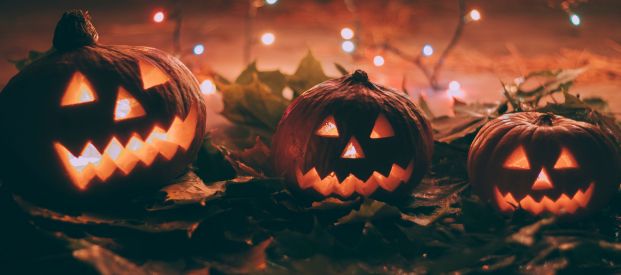Why do we celebrate Halloween?
Halloween is a fun time of year for many families, with activities such as dressing up in spooky costumes, decorating our homes and carving pumpkins. But why do we celebrate it on 31 October? And what are the origins of some of the Halloween traditions? Read on to find out!
Halloween originates from the Celtic festival of Samhain, which marked the end of the harvest season and the beginning of winter. Samhain was celebrated on 1 November and signified the beginning of the new year. People believed that on the night before Samhain the line between the living and the dead became blurred, and the souls of those who had died would return to Earth. People would light bonfires and wear costumes and masks to frighten off evil spirits. These early traditions continue today, with fancy dress being a common part of Halloween celebrations.
All Hallows Eve
Following the Roman invasion, the Celtic celebration of Samhain was combined with two traditional Roman festivals. One was Feralia, the day when the Romans marked the passing of the dead, and the other was the celebration of Pomona, the Roman goddess of fruit trees and orchards. It is thought that the Halloween tradition of bobbing for apples derives from this event.
During the 7th century CE, Pope Boniface IV determined that All Saints’ Day – also known as All Hallows’ Day – was to be celebrated on 13 May in honour of all Christian martyrs. The following century, Pope Gregory III moved the date to 1 November and expanded it to include all saints as well as martyrs. The night before All Saints’ Day came to be known as All Hallows Eve, and subsequently Halloween.
Jack-o’-lanterns
As Christianity spread and merged with Celtic and other pagan traditions, Halloween evolved into a holiday with a mixture of customs and beliefs. One particularly popular tradition is the carving of pumpkins into Jack-o’-lanterns, and this is believed to originate from an Irish folktale about a man named Stingy Jack. According to the story, Stingy Jack tricked the Devil on multiple occasions and was not allowed into heaven or hell after he died. Instead, he was condemned to wander the Earth, lighting his way with a lantern made from a carved turnip. When Irish immigrants arrived in North America, they brought with them the Halloween tradition of carving pumpkins, which were more readily available than turnips, to create their own Jack-o’-lanterns.
Trick or treating
The practice of trick or treating at Halloween is said to derive from the Scottish and Irish tradition of “guising”, which has been in existence for hundreds of years. In a similar way to today’s trick or treaters, children would dress up as ghosts or ghouls and knock on doors requesting offerings from the householders. They would perform a trick such as singing a song or performing a dance and would be rewarded with a treat such as fruit or nuts.
Halloween remains a popular event to this day, combining elements of ancient traditions and modern festivities. It provides both adults and children with the opportunity to dress up, have fun and come together in the spirit of the season. Will you be celebrating this year?










